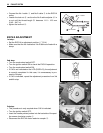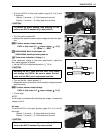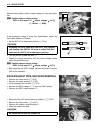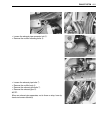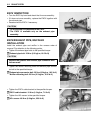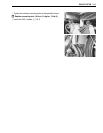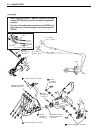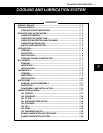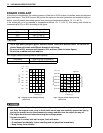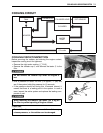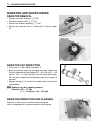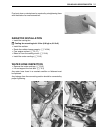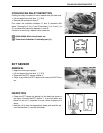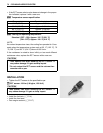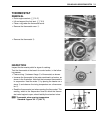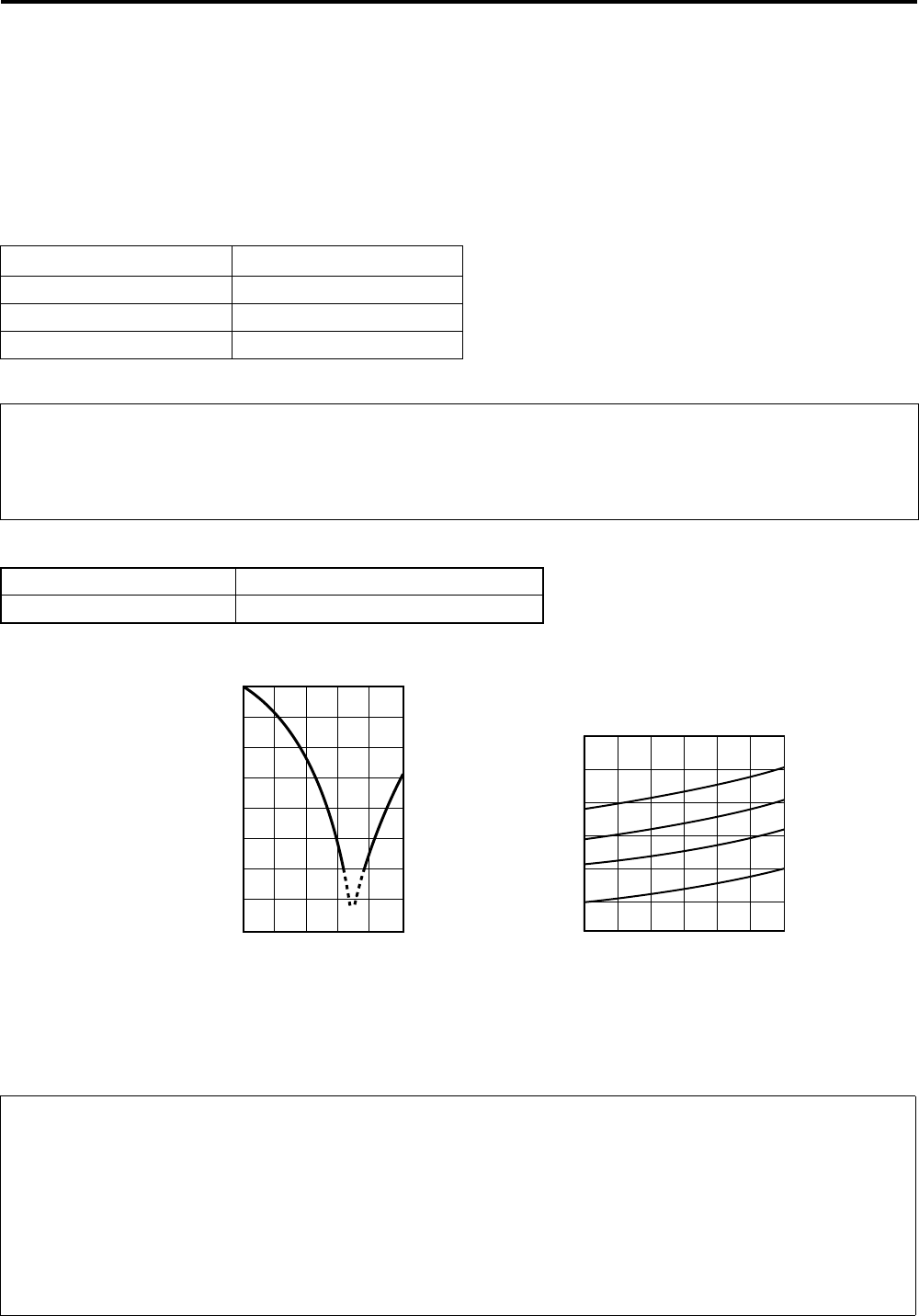
7-2 COOLING AND LUBRICATION SYSTEM
ENGINE COOLANT
At the time of manufacture, the cooling system is filled with a 50:50 mixture of distilled water and ethylene
glycol anti-freeze. This 50:50 mixture will provide the optimum corrosion protection and excellent heat pro-
tection, and will protect the cooling system from freezing at temperatures above –31 °C (–24 °F).
If the motorcycle is to be exposed to temperatures below –31 °C (–24 °F), this mixing ratio should be
increased up to 55% or 60% according to the figure.
50% Engine coolant including reserve tank capacity
Anti-freeze density
Freezing point
50% –30 °C (–24 °F)
55% –40 °C (–44 °F)
60% –55 °C (–67 °F)
* Use a high quality ethylene glycol base anti-freeze, mixed with distilled water. Do not mix an
alcohol base anti-freeze and different brands of anti-freeze.
* Do not put in 60% and more anti-freeze or 50% and less. (Refer to below figure.)
* Do not use a radiator anti-leak additive.
Anti-freeze 1 350 ml (2.9/2.4 US/lmp.pt)
Water 1 350 ml (2.9/2.4 US/lmp.pt)
20 40 60 80 100
Density (%)
0
–10
–20
–30
–40
–50
–60
–70
32
14
–4
–22
–40
–58
–76
–94
Freezing point
Fig. 1 Engine coolant density-freezing
point curve
(˚C)
(˚F)
0 10 20 30 40 50 60
Density (%)
150
140
130
120
110
100
Boiling point
(˚C)
(˚F)
302
284
266
248
230
212
Engine coolant density-boiling
point curve
Fig. 2
(kgf/cm²)
1.5
0.9
0.5
0
Gauge pressure
* You can be injured by scalding fluid or steam if you open the radiator cap when the engine is
hot. After the engine cools, wrap a thick cloth around cap and carefully remove the cap by
turning it a quarter turn to allow pressure to escape and then turn the cap all the way off.
* The engine must be cool before servicing the cooling system.
* Coolant is harmful;
• If it comes in contact with skin or eyes, flush with water.
• If swallowed accidentally, induce vomiting and call physician immediately.
• Keep it away from children.



